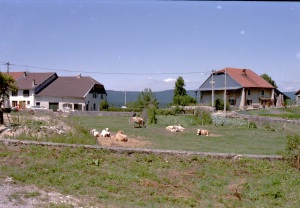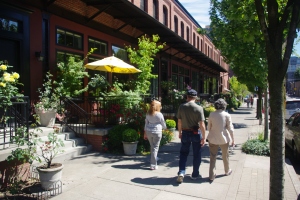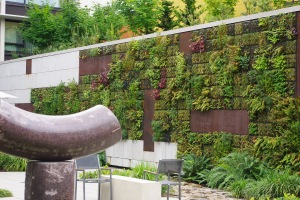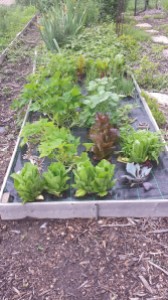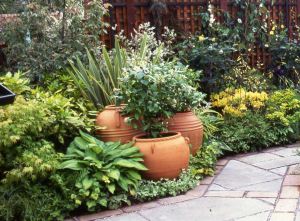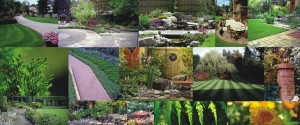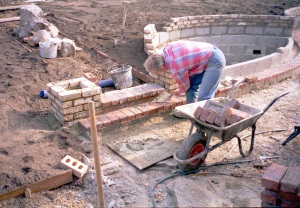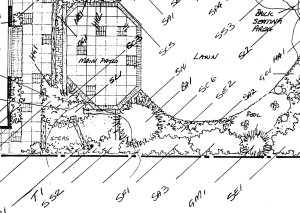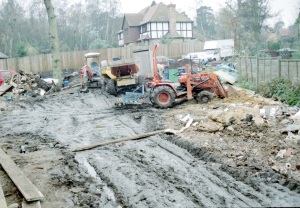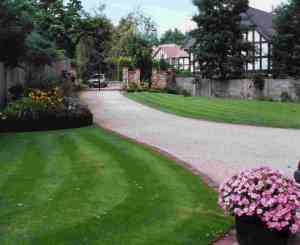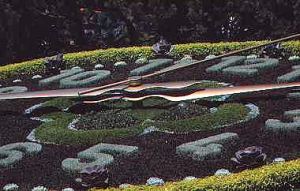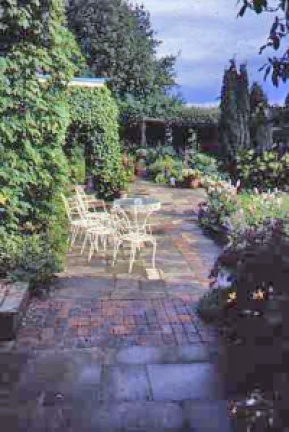-
Growing Trends is listened to in 48 countries, our new program is all about people like you, from all over the world.
We would like to hear from you with ideas, comments and suggestions for our shows drop us a line at chris@chriscoope.com
We have been making changes to Growing Trends our internet based radio show, which we started back in 2015

Time to Eat – All about growing Herbs & Vegetables
Gardenesque – Everything to do with Gardens & Landscapes
World Wide Wesponsibility – A more serious look at sustainability and how we might all help our planet.
Face Time – Interviews with experts on topics of interest
Book Reviews – Interviews with authors of books relating to the environment, nature and garden landscaping.
Perhaps we could interview you for our Face Time segment? …. just drop us a line and we will contact you.
Views: 172
- Edibles, Food, Gardening, gardens, Healthy Living, Home & Garden, Landscapes & Gardens, Nature, park, Vegetable Growing
How much do we really know about soil?
“We know more about the movement of celestial bodies than about the soil underfoot.” – Leonardo Da Vinci
Living a healthy lifestyle can mean many things, regular sleep, exercise, reduced stress, enjoying work, balanced eating, learning something new everyday, exploring new sights, meeting friends & relatives or a gentle stroll around a park.
Almost all involve going outside at some stage, or even spending time outside. Like this walk across the Jura Mountains in France.
When we were kids we used to dig in the ‘dirt’ , now it turns out this passed beneficial microbes to us. Plenty of microbes on the Farm.
Today we hear of parks and recreations departments that are banning pesticides and herbicides from play areas, and sports fields – 40 years ago we were more concerned with flint stones breaking the surface of the grass and ‘skinning’ kids knees when they played sports.
Field hockey needed a very even playing surface of grass to be played well, so it was often heavily compacted and over fed to keep the grass green & growing !
Research shows time and again how beneficial taking a walk in a woodland is, or sitting under a tree, or making a garden or landscape.
Yet most of us, move from one hermetically sealed air conditioned room, to our hermetically sealed air conditioned car,
to our hermetically sealed air conditioned office – is it any wonder we are losing a connection with nature?
Those folks lucky enough to live outside cities and away from the urban sprawl , are indeed fortunate.
They can leave windows open at night, refreshing the air inside, removing stale contaminated air, rarely using air conditioning.
We figured a hedge around the house and a tree canopy above was more than enough to reduce the inside temperature 20 degrees or more. It creates its own microclimate between the hedge & the house.while also providing a fair degree of privacy.
The planning process hasn’t helped much either with 140ft set backs, single story developments , individual car parking areas for each business and strip malls, that encourage you to ‘hop’ in the car to go from store to store.
Then same style sub divisions, with all vegetation ‘stripped’ , the topsoil structure almost non-existent at the construction stage, then hardly any landscaping to create interest, shade, or harmony with surrounding areas.
In fact it wouldn’t be too far to say that the effect is boring !
I wonder how many years it takes before this picture changes?
All this contributes to built in obsolescence within 25 years, the developments have very little diversity of style and worse a total lack of walking from home to the stores, – one of the healthiest pursuits for us all.
One of the major advantages of living in towns or cities is this easy connection with homes, stores, work places and amenities.
We all tend to be creatures of habit, so this routine is a hard one to alter
There are signs of a healthier approach.
Mass transit provides a wealth of benefits, less pollution, easier and quicker commuter travelling, safer travelling, an opportunity to connect with fellow citizens. A more relaxed journey.
Green walls in the urban environment soften an otherwise ‘hard’ landscape, reducing the carbon footprint of the area, making a much more ‘pleasing’ view.
Roof gardens make a more focused impact, they improve the carbon foot print, offer a new habitat and an amenity for the buildings users.
It seems all those ideas, methods and activities from yesteryear were not all that bad for us.
Our connection with nature is again expanding with more and more people exploring the option to grow their own food, or seek out farmers markets.
I suspect for this to become even more popular there will be a need to initially at least simplify the mysteries of growing your own?
The Community Garden or Allotment is a great way to learn the ‘tricks of the trade’ – these are either individual growing areas ‘Allotments’ or the more common these days communal ‘Community Garden’
Of course there is the local ‘Pick your Own’ farms for all those inseason goodies.
From ‘Farm to Table’ might be best said as from ‘Grower to Consumer’ – if this were local, it would have a huge impact on carbon emission reductions ( a lettuce travels 1400 miles to reach your table, not sure how that could ever be described as fresh!).
The more we as professionals make this process easier the greater the likely uptake by households in towns and cities, where new skills will need to be developed.
A really easy start.
A stacked group of herbs, perfect for a compact space.
or much more complex, this lovely exhibition garden shows how to create small garden boxes of produce.
Now all we need is a simple method for the consumer… It will need to have an option which includes a growing medium as many urban yards have very poor soil conditions.
This system can be found at www.picagardi.com
Using a unique patented layout grid. enabling almost anyone to place plants in the correct positions is an option.
Listen to our up coming internet radio show all about developing gardens at www.grotrends.com we call it ‘Hort Cusine’ !
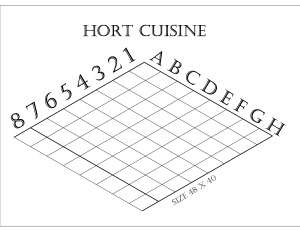
Hort Cuisine Grid The very popular and effective Square Foot Gardening Foundation, developed by Mel Bartholomew has been around for many years, with countless books, examples and users.
As has the New Organic Grower & Four Season Harvest to name but a few from Eliot Coleman, an amazing grower in Maine.
It’s time to really try and add herbs & veggies into our urban landscapes.
We as landscape professionals need to promote home grown food more when we plan new landscapes for clients.
Views: 161
-
Could we ask for a little help from you?
I’ve been really surprised at all the positive comments the site has been generating from everyone – Thank you all so much, it’s fun to write, improves my awful spelling, maybe my grammar as well ?
You can let me know on that one !
Some of you asked if I would make it possible to donate on this site, I’ve tried to avoid that, as well as adverts as I was trying to be impartial, with the content.
As you may know we do have a fun internet radio show, where we interview folks from around the globe about their Gardens & Landscapes.

Find some inspiration for your Yard today… When we started this radio show the aim was to find interesting people who had a passion for their Garden or Landscapes. Little did we know what would happen. In just a few months we have an audience stretching across the globe in 43 countries.
We soon added a web site www.grotrends.com to provide details of schedules, information on guests and sponsors, and a growing information area with details of techniques, ideas and examples of projects.
The show Growing Trends concentrates on the clients, the designers, the creators, the maintainers and the experts that help them, we would welcome any suggestions on who we should contact – the schedule is filling quickly, which brings me on to how you can help.
We have two one hour shows a day seven days a week, with a little funding help we can update the interviews more often, and tell the story of you, or your friends work, or your garden or landscape.
Can you help us in just a small way ? Contributing just $5 ?
Here’s the link to StartSomeGood the crowdfunding source we are using for this fund raising campaign
Growing Trends is fun, friendly, informative, interesting, amusing & entertaining.
This one acre pond has a water change almost once per hour !
A final interesting project from just outside New York. This fully structural gravity wall is almost 27ft high !
Note the access is less than 4ft !
We really would appreciate your support, so we can interview maybe you, or your colleagues or friends, across the globe – thank you all for your support & comments.
You can also find us on Facebook
Ann & Chris.
Views: 102
-
Planting plans made easy to use at home!
It’s been 40 years since I first grappled with a traditional planting plan. All those lovely latin names – like Fagus sylvatica, Fritillaria meleagris, etc.,
In the drawing office, it was a matter of using a thick graph paper so the electric eraser didn’t make lots of little holes in the paper as we repositioned plants, or corrected the many mistakes or changes in mind. Sometimes we used a plant stamp, then labelled by hand. As you can see interpreting the labels isn’t easy.
The whole process was time consuming, difficult to make into a quality finished drawing.
This next version once CAD was introcuded is a combination of hand drawn and CAD drawn, easier to interpret, but still not easy to set out.

Using CAD system On site, in those days these were cumbersome beasts, usually printed on dyeline, so it was dark, difficult to read with scribblings and such in the margin, fragile, and ruined once wet. Wrapping in plastic sort of helped, cutting into smaller sections then laminating was better..
Wielding one of these around on a damp morning picking out the plants, with the planting foreman, and then placing took for ever.
Trying to mark off those plants you had placed and then moving on to the next batch, with a few areas missing….
For some odd reason even though the nursery managed to price all the plants, they never seemed to be able to deliver them all to site completely in one go, or even to the company yard, so the whole process was both time consuming, expensive and worse annoying to a client who by now had had enough of three or five members of staff working in what was their space.
I hear a gentle nod of agreement or perhaps sigh of frustration?
It got so bad that we used to change our standard estimate to something like..
” To carefully prepare ground, incorporating peat and fertilizer at each planting station, to supply & plant in ‘xxx’ number of flowering & ornamental shrubs, carefully watering in on completion, then applying a 50 mm depth of planting mulch”
Here’s a plan without specifics..in this case a veggie garden area.
This gave us a contractual escape clause, but wasn’t what we wanted to portray to our clients. We even tried to restrict the planting selection to plants we knew we could obtain, but designers & clients have pet likes and dislikes being restrained to just a few varieties caused all manner of objections!
We even tried an even more generic look – with areas just designated for planting.
We also found most of our clients actually really wanted to do some of the work themselves, the idea of planting was often the most appealing, as the ground was prepared, the turf laid and all the ‘hard’ structural stuff was completed. The feeling was that just a bit of planting wouldn’t take long and they could then say ‘we did this ourselves’….
There was one small issue, understanding the ubiquitous planting plan. Setting out plants in the damp, with a tape, scale rule and a large piece of paper was a task best left to the experts.
We solved this problem with our Weekend Planting Grid. A really easy to understand ‘garden bedding system’. Today we even have this simple system patented, it’s even incorporated into one of the more easy to use CAD programs.
The system cuts setting out times in half, for anyone, acts as a landscape fabric or paper mulch, reducing weeds and watering and makes the whole process as easy as 1,2,3 ! – costing only marginally more than just a landscape fabric.mulch.
No longer do you need a setting out plan, just a plant position is all that is required.
It makes it very easy to place the plants in position, so now any combination of annual, bulb, corm, perennial, shrub, even tree can be used with little risk of them being placed incorrectly. In fact there is no need for a planting plan at all ! Just a series of grids will do. The fabric is left to act as a landscape mulch mat, preserving water and reducing weeds, all it requires is a 2 inch layer of mulch to keep attractive.
If you use the CAD program you can design your own arrangement , create them with photorealistic images and then print out their positions. The CAD program automatically generates the grid layouts, positions the plants, prints out a planting position list, even prints out a plant label with position for the plant pots, then generates a quotation and plant care notes – amazing really !
Difficult to set out designs are now easy…
Complicated Herb and Veggie gardens are a breeze. With positions shown on a simple patented grid system.

Even more fun is the simple PicaGardi that you can download and use it’s available on the iTunes store, Google Play and Amazon
We are planning a Growing Trends radio show just about design and designers soon, we would love to hear your comments, suggestions & ideas.
Ann & Chris
Views: 60
-
Would you like to be part of our show?
Ann & I have been simply amazed by the interest in our blog & our Growing Trends (click on Growing Trends to go to the site) radio show. Thank you all so much, we have been listened to or our blog read in over 40 countries in just the last three months.
Autumn Planning
As we plan the next series of shows & blogs, we thought we would ask you our readers & listeners if you would like to participate.
So, if you would like to be part of the show, all we ask is for an interesting ‘garden or landscape’ project,preferably with before & after pictures, together with a short note about how you were involved in the garden or landscape. – we do have a small request to ask.
Please could you send your description in English ?
We will pick a selection and the very best responses, who will be invited to participate in some short interviews for a show.
Some suggestions to get you started.
Some of our more successful blogs have been when we have shown ‘Before’ and ‘After’ pictures of projects. Here are a few to give you some ideas, Let’s start with the usual mess that greets the team. Here’s a before picture just as the machinery arrives and the builder leaves…….
Here’s how we were able to transform the mess above into a peaceful oasis, of course everything has to dry out first before you can work the magic, then the skills of the team are paramount to obtaining a ‘finish’
This next one, is actually in a book by Prince Charle called ‘A Vision of Britain’, we also received an award for the work. The very heavy clay was not easy to work with. As usual the builder created a huge mess.
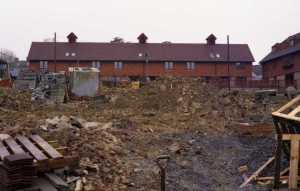
Ok your turn ! The landscape architect for the project, Ian Doughill is seen carrying out a post completion inspection. We maintained the site for a couple of years to ensure complete establishment.
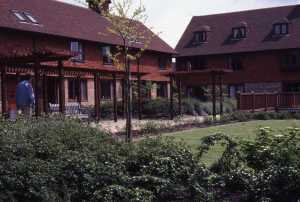
After working a little magic ! This exhibition site is both world famous, fun, hard work, but immensely satisfying to participate in.. a before picture of the Chelsea Flower Show. It’s not your usual mess this time, just an organizational nightmare, with so many firms attempting to bring in supplies and complete their superb work on time.

Chelsea Flower Show ‘Before’ The outlines of the garden can just be seen, with the low wall taking shape on the left hand side. We build a full 6ft (1.8m ) high retaining wall with 3ft (1.2m ) side wall to ‘enclose’ the garden.

The back wall is almost completed. The space has been transformed in three weeks for just four days of exhibition, when over 110,000 people will visit and millions view on television
If you have some ‘Before’ and ‘After’ pictures you would like to share, Ann & I would like to hear from you, just send us a reply with a some contact information on the form below.
We are always looking for sponsors to help with the running costs, this year we thought we would try a small campaign on StartSomeGood.
Our radio show is starting it’s fall funding campaign you can find details at Growing Trends .
Ann & I thank you all so much for your support and comments.
Views: 32
-
It’s all in the detail !
Today, I thought some technical stuff was in order.
I’ll try and make it interesting, no doubt you will let me know ?
I spent almost as much time as a Quantity Surveyor as I did a Landscape Architect & Contracts Manager… the worst part was as you grow a business you have to give up various aspects of the work, allowing others to do it instead.
The secret is always find someone better than you to do the job you are relinquishing…
Then catch them doing it right and praise them, whilst simultaneously stopping them from doing it wrong, without to much rancour.
Some years ago, just after I graduated I found myself working in the minor engineering and technical department for a large London Boroughs Parks Department – today you would be called a Landscape Architect, but in those days the Parks Managers wanted folks with hands on experience. This meant we not only knew how to design, but we also knew how to build and even better we knew how to manage the project, including the labour, right down to the work study times it took to build a specific item. We looked after Schools, Parks, Playgrounds, Golf Courses, Verges, Allotments, Open Spaces, Housing Sites and the odd Airfield.
I always wondered why we frantically completed a valuation of work ( right down to the allowed minutes of time each element took) every Monday morning , then rushed the ‘bonus’ sheets over to the treasurers department on Tuesday morning so the staff could be paid their bonuses on time each Friday – hourly paid staff were paid weekly in England ( us salaried staff were paid monthly, we even worked flexi time with every other Monday off, those were the days as they say !).
In later years these standard minute values that had so painstakingly been obtained turned out to be especially useful when pricing large scale contracts, as they were actual times not priced rates.
What was more interesting though was they enabled someone to build up a time and thus rate for all manner of projects. So we could accurately figure out how long a BBQ would take to build for instance, or how long 5 tonnes of tarmac would take 3 men to prepare, lay, roll and clean up.
When semi automatic pricing came along in the form of access based databases it was easy to ‘plug’ these times into the program to use for pricing projects.
This worked great for projects where you weren’t tendering for a job, as you were usually able to produce a fair price, quickly and accurately.
The projects that went out to tender were much more of a lottery, as depending on who was pricing and why, often dictated how the pricing went… No one minds losing a tender by say 1-2% and if everyone has a similar price. It would suggest that the bill of quantities , drawings and specifications are usually going to be an accurate reflection of the work in hand, without any unforeseen errors.
What is intensely irritating from a contracting point of view is when you carefully price a project and then lose by more than 15%, I’ve often wondered why during the assessment phase a tendering body doesn’t add up all the tender values, then divide by the number of tenderers and use that mean figure as the basis for the work – we found that more often than not when we did this in the parks department that was the final cost of the project. I believe the Dutch usually take the second lowest price as this makes it almost impossible to ‘buy’ a job by underpricing !
One of the early ‘tricks’ we learned, was how to be asked to price the better projects if we eliminated the ‘snagging or punch list’. The client put us to the top of their use list. More often than not our site staff ‘snagged’ as they went along, this saved us so much time we gave them a bonus.
Another trick was to put the projects up for a national award – we were fortunate to receive 17 national awards over the years, they were great for staff moral , even better for our clients who then asked us to price some fabulous projects.
We have always tried to be professional, to do the best job we could for a client, avoiding confrontation as much as possible, sure we negotiate hard, but not too aggressively. – the saying ‘Under promise and over perform’ is a great way to work.
The pointing above is typical of our approach, when it comes to the finish it is essential to maintain a clean consistent finish, it looks good, keeps everyone happy..
The real pearls of wisdom are ” Quality is remembered long after the price has been paid ”
Have you visited one of your old projects recently?
What did it look like?
Listen to Ann & Chris at Growing Trends
Views: 64
-
From “Concept to Completion” – a complete project!
Ever wondered how a landscape project is conceived, designed, planned and then implemented?
We have created quite a few over the years, so we thought we would attempt a trial of one here that we did some years ago.
There is an ulterior motive for this, Ann & I would like to attempt to follow a project from ‘Concept to Completion’ on our radio show ‘Growing Trends’
This project started because the owners, a young couple, were starting a family, and wanted the swimming pool that dominated their back garden removed, partly for safety reasons and partly because as you can see it didn’t leave much space for a user friendly garden.
The first step was to survey the garden, in this case we needed to take fairly accurate levels to enable us to quantify the amount of work to do.
This has a number of benefits ;-
When working in tight areas , there was only a side gate access, it is very wise to design in such a way as the least amount of material is taken away or brought in to complete a project – all that hauling is wasting the clients budget.
Secondly it is jolly hard to accommodate too much material when the entire site is being worked on.
With such restricted access the design whilst needing to be imaginative, had to be practical and effective.
The solution was to use the existing access path level as the main level, demolish the pool surrounds, break out the base of the pool, to allow for drainage, then backfill in layers the excavated pool , paving and surplus material to bring the levels up to create a much larger patio.
We even salvaged some of the brick wall to mix in with the new london stocks to create the imposing planter that acts as a statement as you walk around the side of the house to the rear garden.
The new paving extends all the way around the house to give continuity, we added a stock brick edge to the paving so we could link the low black stained timber retaining walls, the raised patio diaz, and the black stained timber edged step to the rest of the garden.
The stained timber edge is protected with polythene sheeting and has a gravel pressure release drain set behind, to prevent water incursion onto the light coloured patio stones, which would stain very easily otherwise.
There is now a much enlarged patio area ideal for young children to play on, which is both safe and secure.
The step detail is modulised to provide continuity and ease of use when walking on, planting the edges will over time soften the strong straight lines and allow the planting to seamlessly flow into the step area.
The steep banks are now lost in the planting, supported by the low stained timber wall, creating a feature rather than an aftercare issue as before.
The completed project, is much easier to maintain, has a huge amount of safe space, opens the garden up, into an interesting useable space, for play, entertaining , whilst giving more light to the inside of the house and a feeling of spaciousness.
You can hear Ann & Chris talking to garden owners and the experts that help them on Growing Trends ( just click this link) it will send you to our internet radio show.
If you have an interesting garden or story to tell do drop us a line, we will get back to you in a few days.
We would love to hear from you..
Ann & Chris
Alternatively take a look at our web site at www.grotrends.com it’s packed with helpful hints.
Views: 84
-
Those Opps! moments, never Assume !
Today you can chuckle at my expense !!!
Designing & Building award winning landscapes has been a very rewarding, satisfying, fun filled occupation, of course there have been days one prefers to have skipped or passed by, yet more where looking back it was quite amusing now – I’m sure you too have a few you could share with the growing readers too.
So Ann and Chris are making you an offer you cannot refuse? – well perhaps you can !

Here is the challenge. If you have an amusing enough incident and you share it here by way of a comment,
Ann & I will call you ( we will have to keep this to an English conversation for now) , we will give you at least 5 minutes to describe in your own words the Opps! moment, you may also give your business a gentle plug!
Hows that ?
So let’s get the ball rolling with some of those Opps ! or “Out take” moments that have happened to me.
“Hook – Up”
The first that I remember wasn’t actually related to horticulture it was whilst working during a summer recess from college, working as a summer assistant lock keeper,on the River Thames at Mapledurham, which I think is in Oxfordshire, as I recall a quite well known movie was being filmed at the time called “The Eagle has Landed”, just across the reach from the lock.
On this particular day, there was lots of action and noise from the film set, lots of tourist and regular cruisers plying up and down the Thames. The lock is quite large – from memory nearly 200 ft long and about 16ft wide with a 5 ft rise and fall. Because we were busy we were packing in the boats. Anyway, having filled the lock with boats I opened the sluice gates to let the water out and let the lock water level fall around 5 ft, as this happened I was distracted by the filming. the next minute I turned to see all the boats hooked up with no water beneath! … not a good position to be in !
It took some time to undo the resultant mess….
“Splash”

Client Pool Sticking to water… one night I was making a visit to a potential client on the way home, it was around dusk, the home owner was a banker, they had a lovely home in Chislehurst, Kent. After a brief talk we took a short stroll around the garden as dusk was fading, it was a long time but it was quite dark by the time we headed back to the house.
For some reason, I was talking to the client side by side one moment and the next I was treading muddy water, tearing though a rather decrepit swimming pool cover having missed the dog leg steps on the poolside.
The water soon reached my waste, and my suit took on a rather unusual color and smell..meanwhile the client rushed indoors exclaiming I had fallen into the pool, which brought the whole family out giggling !.. somewhat soaking I drove the last 15 miles home. We ended up completing the project, one of the requirements was to break out the miscreant swimming pool !
“Mud Slide”
On another occasion we were contracted to dredge a small lake and construct a weir. ( a pond is in my definition an area of water in which you can throw a stone over it to land on the other bank. A lake is where the stone falls into the water). So dredging a lake is a task, requiring a variety of big toys… in this case we arranged with the local waterways folks to block ( legitimately) the upper inflow channel, allowing the water in the lower lake to fall around 8-12 ft which would allow the use of a piece of equipment similar to a dragline.
Unfortunately, whilst we knew the plan, the water folks knew the plan and the parks department knew the plan, nobody had told the security guys – who “unblocked’ the upper lake outfall late in the night, thinking some vandal had blocked up the outfalls !
So after about two days of working we returned in the morning, to find the lake full of water , the equipment marooned 50 ft out in the lake,with their tracks buried and the mud slowly engulfing the cab.. some drastic action was needed, a very heavy lift truck was used to winch out the equipment, and we changed our method of removing the silt,to pumping the now slurry into a temporary lagoon to dry out before carting away.
“An up-lifting experience”
The next was a tad more mundane, well it started that way at least. We had just completed a large ‘cut & fill’ project covering many tens of acres on a setting out ground for a new power station, we were preparing one area of about 30 acres for seeding when suddenly the bomb squad pulled up, I kid you not…
Here is an English sapper exploring on the site !
Apparently they had been told that a lady across the way ( about 1/4mile, you can see the block in the distance) had just recalled a flight of German bombers had dropped their loads of bombs in the 2nd world war ,just where we were working some had failed to explode…

so they dug around for a few days, messing up our seed bed and left, when they failed to find any …..
Some ten years later, whilst preparing for the new Queen Elizabeth II, Dartford bridge, the said 15 or so unexploded bombs were indeed found in the hedge row not 70ft from where the bomb squad had poked around !!!
It was a very useful do not ASSUME moment … you know the meaning don’t Assume as it makes an “ASS out of U and ME”
Enjoy the week !
Ann & Chris
Views: 95
-
Have you taken the kids to a park recently?
This classic park surrounding the simply stunning Nelson-Atkins Museum of Art is in Kansas City.
It is a great place to start – as long as the temperature are being kind !

Anyone for Badminton? The museum has an exhibit which kids would really enjoy, as long as they are accompanied, it’s a glass Labyrinth.

Picture credit to Chris Smart In other countries..
Alternatively, if you were across the pond in say Paris, France. You could visit a more modern looking park. I think this is Parc de Villette
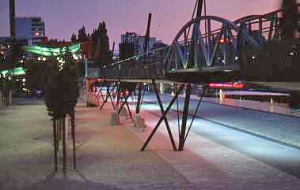
Porte de Villette, Paris or perhaps a more tropical park in say Honolulu.

Honolulu Sometimes just the local school has a pleasant surprise in store, as this school in south London achieved.

A school quiet garden Most parks are designed and built to a high engineering standard. They can last a long time without needing costly repairs.
Over the years we designed & built a huge array of children’s play areas, mostly in parks or on community housing sites, occasionally in a school, the one above was a really fun project, quite a few years ago now.
The idea was to have a theme for the closed in ‘quiet’ area, so the architect suggested a ‘Kentish Riverbank’ We developed a dry river bed using kidney stones set in a flowing pattern, added a jetty to link the ‘Oast’ house from the ‘Kentish Barn’ , included a loading ramp – to enable wheel chair access.
Then created a few sail boats with trees for masts and sails. All the planting was native to a Kentish riverbank along the dry river, with more architectural plants around the edge.
We added a ‘hump back bridge’ in natural stone & a fallen oak tree, from years back when there was a very large storm.

School Garden One of the art teachers had the kids create a whole series of ceramic fish which we set into the river bed, they make excellent brass rubbings !

Ceramic Fish for Riverbed. Children love to interact with nature, they also enjoy movement. They oddly like some risk. You will notice though that here we kept away from moving objects as this was a ‘Quiet Garden’ .
City parks in recent years have tended away from moving pieces of play equipment, mainly due to the liability from accidents, they use a more static type of play equipment, although the classic swing is still in evidence in many parks to this day.
More awareness of other dangers has lead to many play areas being fenced in, to protect the children playing.
Visiting a local farm is yet another wonderful experience “Pick you Own’ farms can be a wonderful treat for the kids..

Fruit picking Here in Weston, Missouri we have a classic old style farm that is just enchanting.
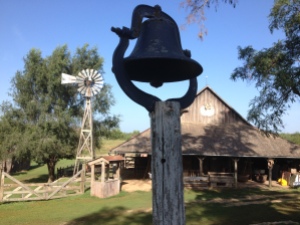
Early one morning , Weston Red Barn Farm Ann & I, interviewed Farmer Steve last week he will be on our show very soon, to tell you how busy he is kept with all his animals and field of fruit and pumpkins not to mention around 15,000 kids visiting his farm each year !
You can hear our other interviews at Growing Trends
Or you can visit our show web site at Landscape Knowledge.com to read more
Enjoy your weekend, thank you for reading our blog, we would love to hear from you.
Ann & Chris
Views: 35
-
A rare moment of peace in the perfect haven of a landscaped garden

Classic English Garden “The commitment & sheer hard work required to achieve career success nowadays takes a heavy toll on our lifestyles. All of us need to counterbalance a busy working schedule with the right level of relaxation. For centuries gardens have been places of retreat and contemplation where our minds, detached from everyday problems, can resolve conflicts and plan confidently for the future.”
“A rare moment of peace in the perfect haven of a garden brings us renewed harmony with nature”

A short stroll to the patio There is something rather special about returning home from work , seeing your beautiful landscape, perhaps pouring a glass of wine, or beer, then taking a walk around your landscaped garden enjoying the trees, flowers, shrubs, all whilst listening to the insects & birds, before an evening meal.
This tends to be a bit of a chore when the temperature is over 90f with sweat dripping off your forehead with each sip, however once the temperature falls to below 80f it is very much more relaxing.
It’s a great time to water the container plants ,dead head the flowers, check on the veggies , check on the water levels of the ornamental ponds, maybe even pull the odd weed from your immaculate borders. You do have immaculate borders? I mean what would the neighbours say ?

Garden Pond Finally stroll back to the main terrace to complete or restock the beverage..mmmm ‘if only’ I hear you say, alternatively pop into a nearby park at lunchtime for a few minutes peace and relaxation.
Unexpected benefits of gardening
Research is now emerging that suggests that digging in the soil is actually beneficial, as the microbes found in real soil are the very ones that help us feel good . – Perhaps its time for us to develop adult sand pits? No just kidding, all that yucky sand traipsed indoors would wreak havoc with the carpets, “She who must be obeyed” would read us the riot act.
I do think that , garden landscapes are for using, they are not like a trophy, or picture hanging on the wall, they are alive, constantly changing ,constantly in need of nurturing, feeding, watering ,tending but above all else enjoying.
What better way to enjoy than to actually get into the midst of the garden and soak up all those positive ions?

A maturing landscape This beautiful award winning garden was developed some years ago for a very busy client, who had a passion for orchids , immaculate lawns, with filled to the brim shrub borders.
We were often asked how it was that most lawns had these long lasting “stripes”. The secret is two fold, first the mower used has to have a roller behind the cutting blades, it can be a rotary mower, although the best is obviously a cylinder mower, also the roller should be the drive method for the mower .
The second is to make sure that each time you cut , you turn 90 degrees from the last.
The advantage of the cylinder mower is, usually you are cutting finer grass, and it needs to be quite short, a rotary mower tends to tear the grass blades and thus causes bruising, so it never looks as good, but it is able to cut much tougher grass which is usually also much higher in length.

A large main lawn Sometimes when I wished to get away from the constant ringing phone , a product of having great teams, being in constant demand and being easy to contact, I would head out to a clients garden and actually spend an hour or two cutting their lawn for them, although it earned me the reputation of ‘The Gardener in a Suit” as I always wore a suit and tie to work !
It was a great way to recharge the batteries !

The complete lawn Come listen to our interviews at Growing Trends they are all about these amazing folks with a passion for landscape gardening, the experts that help them and the wonderful folk that create them.
We would love to hear from you too….if you visit us at www.growingtrends.org please spend a moment to click our Facebook Like !
Ann & Chris
Views: 107
-
Gowing Trends – this weeks interviews
Hello to our Growing band of followers.
We pre-recorded both of these interviews a few weeks ago, each is really quite special, and is the start of a series of Horticultural interviews with a Different Perspective.
We have to thank Dr. Richard Benfield for this, we interviewed Richard in Australia – he will be on the show shortly. Richard was fresh from watching three kangaroos demolish a fence in front of his vehicle as he drove in Western Australia.
Richard is a professor whose research has revealed some fascinating facts – for instance food & garden tourism attracts over 78 million visitors a year across the USA !
So here is the first in this series, we hope to add one a month within the programming, please do let us know what you think, any ideas or requests.

“Did I say that ?” This weeks show is from two truly outstanding places –
The Nelson-Atkins Museum of Art’s superb Sculpture Park.
Being a transplanted ‘Brit’ , living in Kansas City, I was amazed to find 13 Henry Moore statues in our midst, they are like a place of inspiration, and just get the creative juices flowing for this designer.
The Nelson-Atkins Museum of Art is a gem, here in the American heartland.

Anyone for Badminton? The sculpture park is celebrating 25 years this year, it is a must see attraction in Kansas City. So on a rather windy evening Ann & I called in to interview the Sanders Sosland Curator, Jan Schall, Ph.D.
The park covers some 22 acres, in the middle of Kansas City, just along from the Plaza. It was opened in 1989, designed by Dan Kiley & Jaquelin Robertson, there are more than 30 sculptures.
The Sculpture Park is FREE to the public, open year round during daylight hours, and a wonderful place to have a picnic!

One of the many Henry Moore Sculptures The Kauffman Memorial Garden
This is a truly beautiful garden, superbly maintained by Duane and his volunteer staff, the garden has so many wonderful plants in this walled garden’s micro -climate, the attention to detail , the care make this probably one of the best gardens in Kansas City

Absolutely stunning at this time of year ! The Ewing and Muriel Kauffman Memorial Garden draws inspiration from the couple’s journey through life and their commitment to share with others. It is an enduring gift for Kansas City that extends the legacy of a gracious couple and welcomes visitors to a vibrant landscape throughout the year.
The Kauffmans’ world travels inspired the creation of a space comparable to parks throughout Europe. The garden features bronze sculptures by Tom Corbin among lush and colorful annual and perennial plantings, pruned foliage framed by stone walls, brick walkways and playful fountains.

Looking back towards the entrance walkway Views: 62




